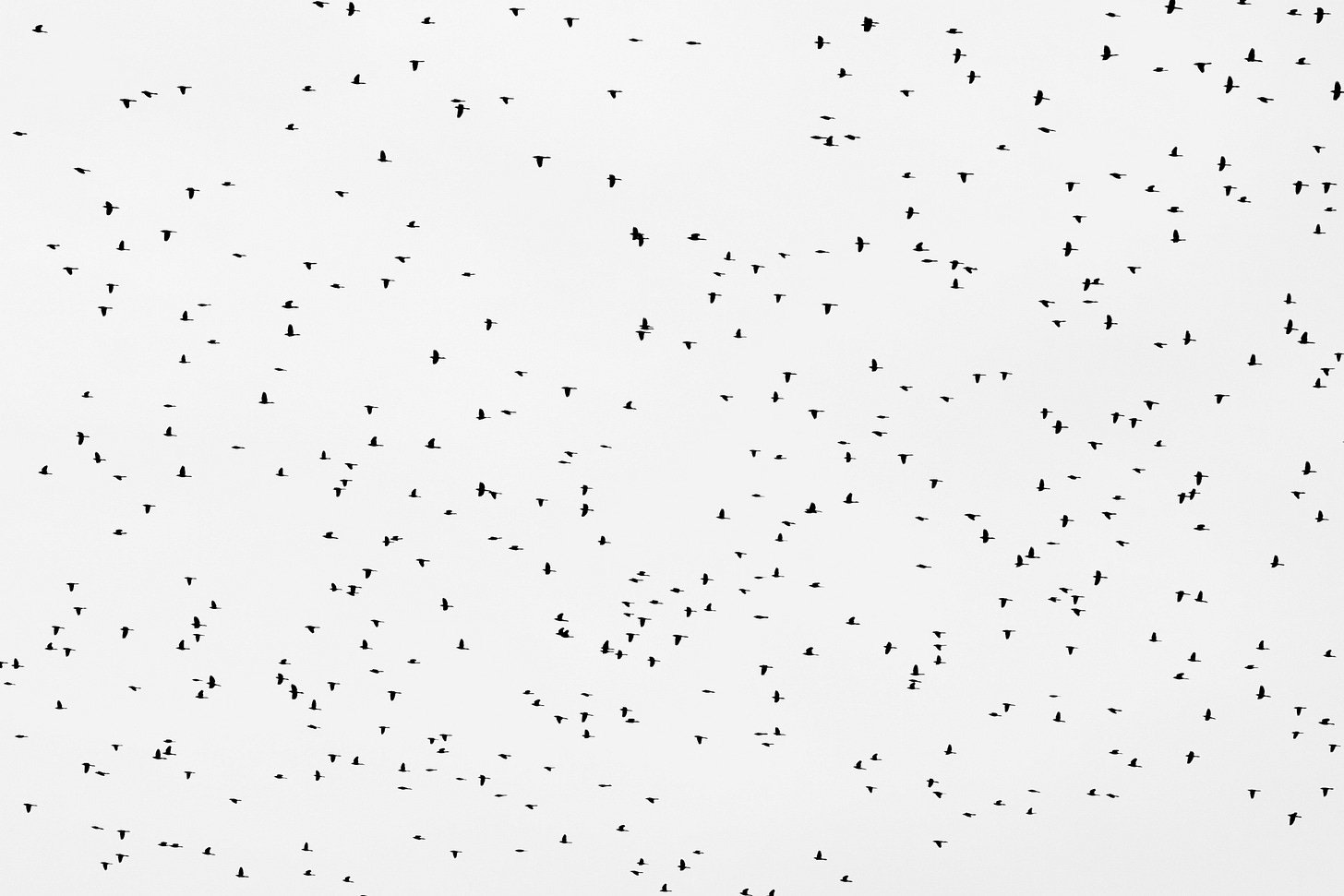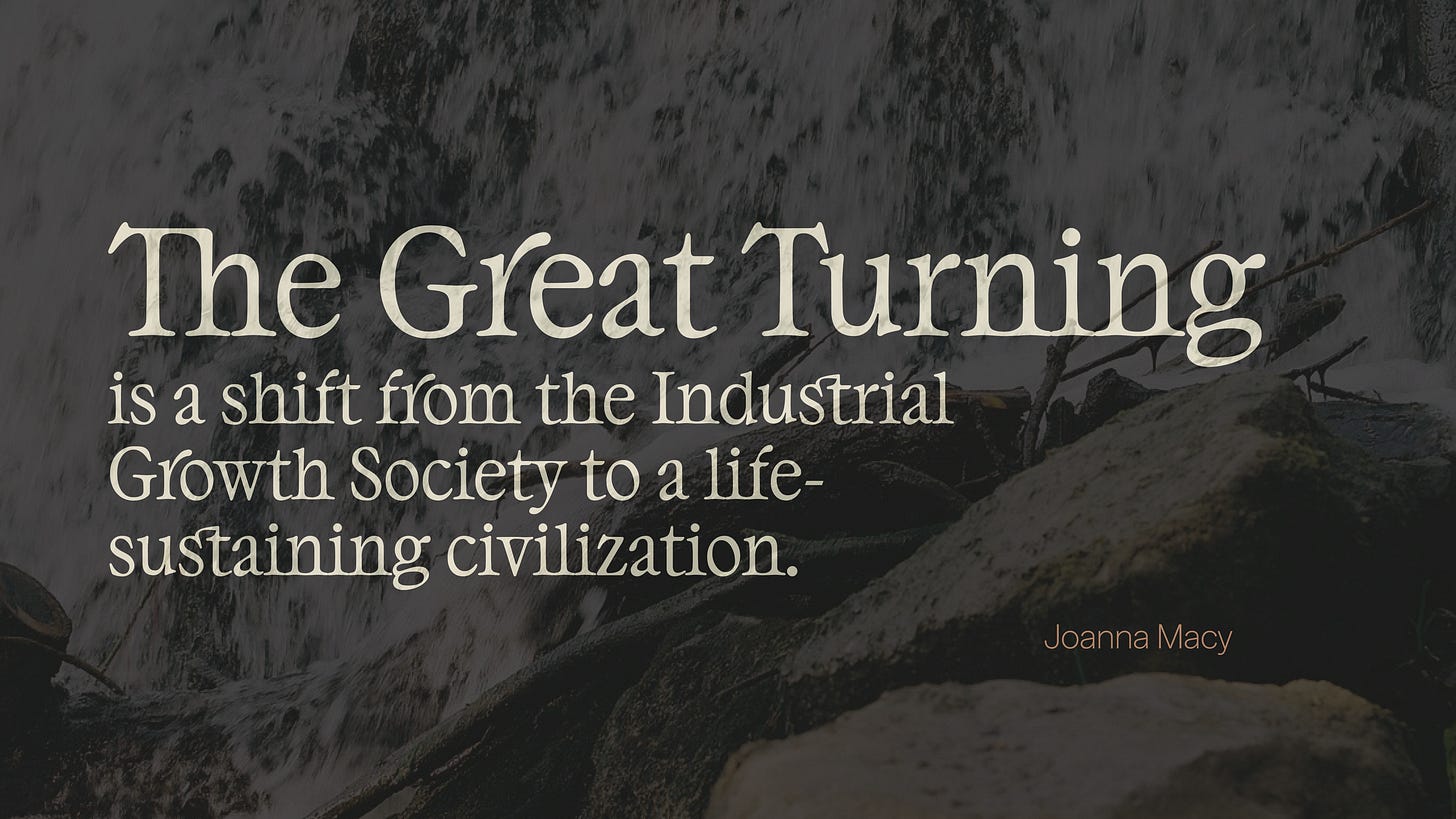A regenerative movement is happening, and it's for everyone
Something is shifting. You can feel it. In the way people are speaking about land and place, in the refusal of extractive systems, in the growing appetite for community, connection and care.
Across disciplines and geographies, currents are coalescing, and they carry the name regeneration.
What is regeneration?
To understand regeneration, we need to move beyond definition, and into relationship.
As Daniel Christian Wahl reminds us:
“Regeneration is the impulse of life itself - to renew, to heal, to relate, to learn.”
Regeneration is not a toolkit. It’s a practice rooted in place - a living invitation into reciprocity with each other and with the more-than-human world.
On one hand it’s beautifully simple, and that for me is what makes it so full of hope and potential - it's simply what is within all of us. We just need to slow down and connect with our true nature. On the other hand, regeneration is also about engaging with complexity in ways that might be unfamiliar.
But if we enter these waters gradually, hand in hand, we can avoid drowning in complexity. As well as being a journey into ourselves and our ecology, I believe regeneration can also be considered a movement.
A movement emerges
In the language of social transformation, regeneration carries the signals of a movement.
A shared ethos: Life-affirming, place-based, reciprocal.
Diverse actors: From farmers to artists, youth to elders, scientists to spiritual guides.
A common direction: Toward belonging, relationality, and stewardship.
A sense of purpose and kinship: You’re not just doing your own work. You’re part of something larger.
An ecology of change
While treating regeneration as a movement can be powerful, it also carries risks:
Exclusivity: When the movement becomes too branded, it can alienate those already doing the work under different names.
The illusion of a single movement: Regeneration is not the only current of change. It interweaves with others - climate justice, decolonization, degrowth, localism, and more. These movements may not share a banner, but they share direction.
Over-simplification: When we overdefine regeneration, we risk losing its essence - a complex relational process, not a fixed framework.
I believe regeneration is a movement that’s coalescing, but it’s also part of an ecology of change that has been bubbling up for decades.
Meandering between worlds
We are meandering between worlds - the old one unraveling, the new one not yet fully formed.
On one hand, we must hold grief for what is collapsing; on the other, we tend to the fragile shoots of hopeful emergence. Regeneration, then, is not just about reimagining our way of living., it's about learning how to navigate between the old and the emerging.
This is the space that Joanna Macy names The Great Turning - a shift from the Industrial Growth Society to a life-sustaining civilization.
This shift has three dimensions:
Holding actions to slow destruction and protect life
Creating structural alternatives - from food co-ops to energy commons
A shift in values and perception - a new story of what it means to be human on Earth
Some now speak of a fourth: Nurturing Life - the quiet, everyday acts of care that sustain the movement.
Who (and what) does this movement call for?
Movements aren’t built by niche groups.
They are collective, relational, and made from many threads.
To navigate this transition, we need more than technical expertise. We need mutual aid networks - systems of care and solidarity that hold people as they do the hard work of unlearning, healing, and reimagining. Such a transitional movement calls not just for regenerative designers and farmers - but for a much broader constellation of contributors:
Caregivers and emotional workers
To tend to burnout, grief, and uncertainty as old systems fall away - including grief workers and spiritual guides who support emotional processing and help us cross thresholds with meaning.
Cultural weavers and community builders
To strengthen social fabric, foster mutual aid networks, and hold space for collective belonging - including educators, bioregional weavers, community hosts, and ritual keepers who help root learning in place and practice.
Technologists and tinkerers
To innovate and reimagine tools and systems so they serve life - this includes toolmakers, innovators, and designers working on everything from regenerative materials to evolving soft technologies like sociocracy.
Bridge builders and facilitators
To guide us through the practical, logistical, and psychological terrain of deep change - including systems thinkers, policy mediators, and those who hold collaborative space in complexity.
Artists, poets, and storytellers
To keep our imaginations alive, shape new myths, and remind us of what we’re working toward. This includes storytellers who make the invisible visible and artists who help us feel the future and spark our creativity.
Historians and wisdom keepers
Including Indigenous knowledge holders and scientists, to ground us in ecological literacy and ancestral knowledge that ensures regeneration is rooted, not reinvented.
Regeneration isn’t a solo discipline. It’s a movement of many threads and it depends on our ability to see each role as vital to the whole. From composting the old to cultivating the new, we need everyone.
To guide us though system change we can draw on tools like the Iceberg Model, which helps us look beneath surface events to the patterns, structures, and worldviews that shape them. Regeneration is as much about shifting story and culture as it is systems.
The Three Horizons Framework shows how futures unfold across time: from the dominant systems now in decline, the space of experimentation and transition and the regenerative world we’re growing into.
Storytelling is infrastructure
We don't just need new models. We need new myths.
Stories show us what’s possible and what’s already happening, reminding us that we are not alone. Meander is a magazine for the regenerative movement. It exists to illuminate. and nourish the story of this transition. We tell stories of regeneration not just to inspire, but to equip. As the UAL’s Impact Storytelling report suggests, storytelling is not just communication. It’s infrastructure. It shapes culture, builds collective identity, and influences what becomes possible. In a world between worlds, we don’t just need instructions. We need invitations. Meander promises stories that help us navigate, connect and build the life-sustaining world we know is possible.
What gives me most hope? That these are not grand, exclusive stories. They are quiet, humble beginnings about slowing down, listening and reconnecting.
Regeneration is not a club - it’s a calling.
This movement is for everyone - let’s Meander together.






Why do those regenerating life, restoring natural cycles, need technological skills? Why is a movement necessary for best stewardship practices and compassionate nurturing? What we have recently done to the land, replacing vegetation and soils with hard surfaces, increasing stormwater when annual rainfall is not changing? Give land its rainfall.